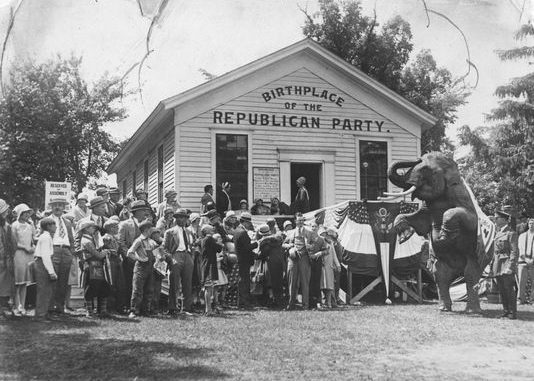
In Ripon, Wisconsin, former members of the Whig Party meet to establish a new party to oppose the spread of slavery into the western territories. The Whig Party, which was formed in 1834 to oppose the “tyranny” of President Andrew Jackson, had shown itself incapable of coping with the national crisis over slavery.
With the successful introduction of the Kansas-Nebraska Bill of 1854, an act that dissolved the terms of the Missouri Compromise and allowed slave or free status to be decided in the territories by popular sovereignty, the Whigs disintegrated. By February 1854, anti-slavery Whigs had begun meeting in the upper midwestern states to discuss the formation of a new party. One such meeting, in Wisconsin on March 20, 1854, is generally remembered as the founding meeting of the Republican Party.
The Republicans rapidly gained supporters in the North, and in 1856 their first presidential candidate, John C. Fremont, won 11 of the 16 Northern states. By 1860, the majority of the Southern slave states were publicly threatening secession if the Republicans won the presidency. In November 1860, Republican Abraham Lincoln was elected president over a divided Democratic Party, and six weeks later South Carolina formally seceded from the Union. Within six more weeks, five other Southern states had followed South Carolina’s lead, and in April 1861 the Civil War began when Confederate shore batteries under General P.G.T. Beauregard opened fire on Fort Sumter in South Carolina’s Charleston Bay.
The Civil War firmly identified the Republican Party as the party of the victorious North, and after the war the Republican-dominated Congress forced a “Radical Reconstruction” policy on the South, which saw the passage of the 13th, 14th, and 15th amendments to the Constitution and the granting of equal rights to all Southern citizens. By 1876, the Republican Party had lost control of the South, but it continued to dominate the presidency until the election of Franklin D. Roosevelt in 1933.







Be the first to comment